 | Horatio Nelson Robinson - Arithmetic - 1860 - 444 pages
...find the area of a trapeeoid. A Trapezoid is a figure having four sides, two of which are parallel. RULE. Multiply one half the sum of the parallel sides...distance between them. EXAMPLES FOR PRACTICE. * * 1. My farm has four aides, two of which are parallel, and at a distance from each other of 30 ch. 25 1.... | |
 | George Roberts Perkins - Geometry - 1860 - 472 pages
...whose side is 10 feet ? Ana. 43-301 sq. feet. PROBLEM IV To find the area of a trapezoid. DE RULE. half the sum of the parallel sides by the perpendicular distance between them. [Geom., B. HI., T. XXIIL, Cor. H.] §85.] MENSURATION. EXAMPLES. 1. What is the area of a trapezoid,... | |
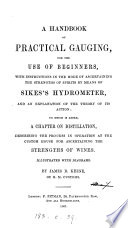 | Janes Boddely Keene - 1861 - 104 pages
...perpendiculars DE 6 and FB 12 ; what is the area? Ans. 216. To find the Area of a Trapezoid. KUI/E. — Multiply half the sum of the parallel sides by the perpendicular distance between them, and the product will be the area. In the trapezoid ABCD, fig. 11, if we divide the side AC in the centre... | |
 | Thomas Kentish (of London.) - 1861 - 372 pages
...quadrilateral that has only one pair of its sides parallel is called a trapezoid. To find its area, multiply the sum of the parallel sides by the perpendicular distance between them, and take half the product— that is, add AB to CD, multiply by mn, and divide by 2. 106. A quadrilateral... | |
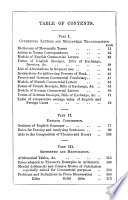 | Alfred Newsom Niblett - 1861 - 204 pages
...parallel. £_ j \ NB—In this figure the dotted lino shows the perpendicular height. RULES. Multiply the sum of the parallel sides by the perpendicular distance between them, and half the product will be the area. Or, half the sum of the sides multiplied by their distance will... | |
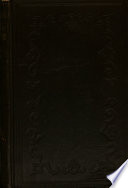 | Oliver Byrne - Engineering - 1863 - 600 pages
...find the area of a trapezoid, or a quadrangle, two of whose opposite sides are parallel. — Multiply the sum of the parallel sides by the perpendicular distance between them, and half the product will be the area. Required the area of the trapezoid ABCD, whose sides AB and... | |
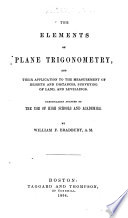 | William Frothingham Bradbury - Plane trigonometry - 1864 - 324 pages
...3.073064 Ans. 1183.2 square feet. PROBLEM III. 106. To find the area of a trapezoid. RULE I. Multiply half the sum of the parallel sides by the perpendicular distance between them. Or, if the angles are known, we can use RULE II. Divide the trapezoid by a diagonal, and find the area... | |
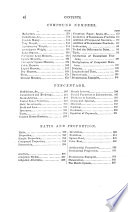 | Horatio Nelson Robinson, Daniel W. Fish - Arithmetic - 1868 - 390 pages
...sum of the parallel sides ; hence the RULE. Multiply one half the sum of the parallel sides by tlie perpendicular distance between them. EXAMPLES FOR...inches wide at one end, and 9 at the other ? Ans. V2\ sq. ft. 2. What is the area of a board 8 feet long, 16 inches wide at each end, and 8 in the middle... | |
 | William Mitchell Gillespie - Surveying - 1868 - 530 pages
...figures, tiro opposite sides of which are parallel. The content of a Trapezoid equals half the product of the sum of the parallel sides by the perpendicular distance between them. If the given quantities are the four sides a, 5, c, d, of which 5 and d are parallel ; then, making... | |
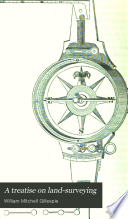 | William Mitchell Gillespie - Surveying - 1869 - 550 pages
...figuies, U'o opposite sides of which are parallel. The content of a Trapezoid equals half the product of the sum of the parallel sides by the perpendicular distance between them. If the given quantities are the four sides a, b, c, d, of which b and d are parallel ; then, making... | |
| |